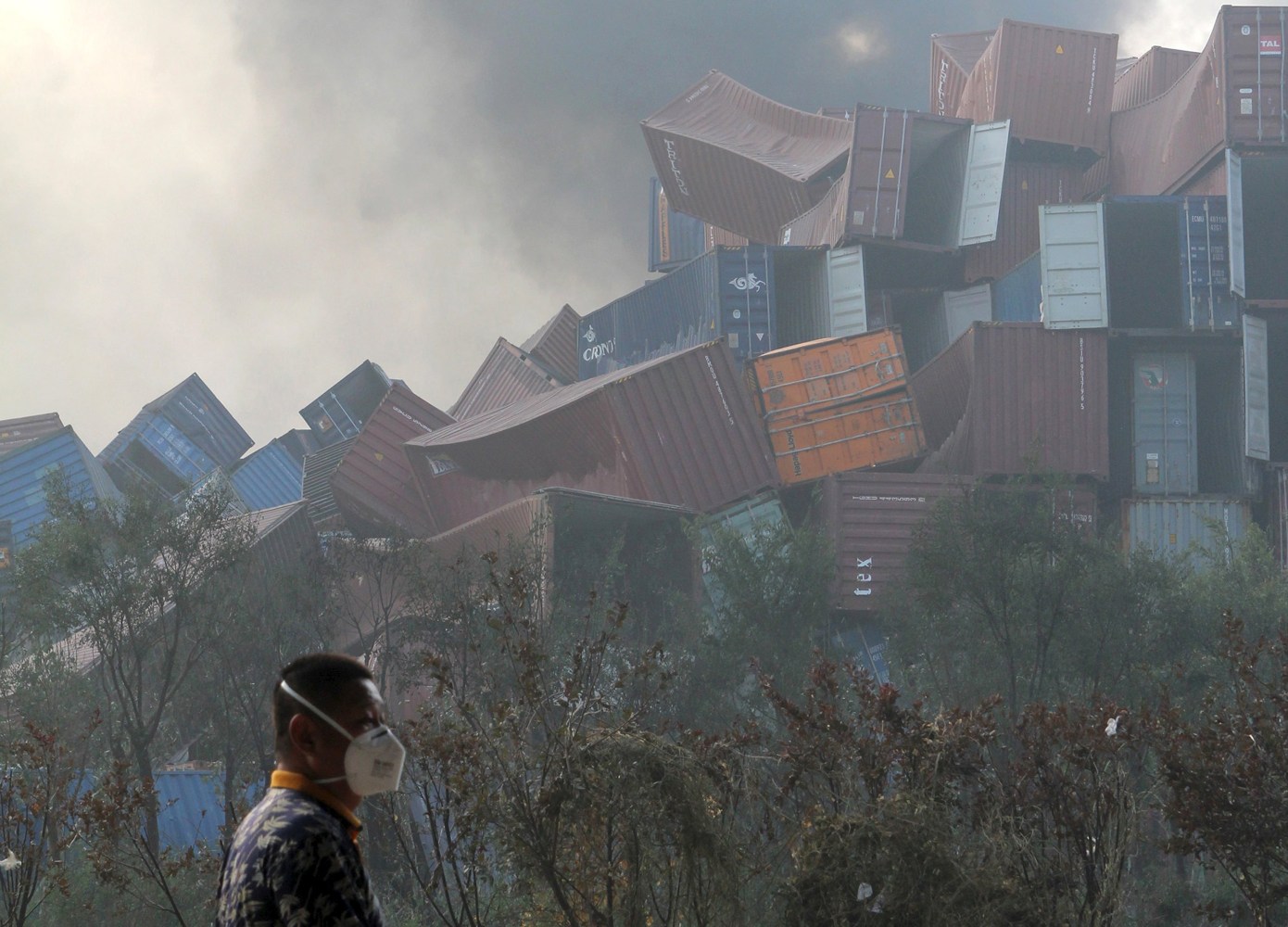Monitoring news of the explosions in the giant port of Tianjin, China.
We are told that a fire in containerized cargo brought dozens of firefighters to the scene and later led to two explosions, the first about two or three metric tons of TNT-equivalent and the second less than 23 metric tons ... according to the official seismic data.
I looked up the site for the China Earthquakes Networks Center, but all the information I see posted there is dated and limited to earthquakes.
From the images, and the continually rising death toll in the headlines, I'd be surprised if the total yield was much below 100 tons of TNT equivalent. Damage visible in the daytime (Photo, Beijing Youth Daily):
The ripple effect on the world's supply chain could last longer than hospitalizations, as Tianjin is one of the top export-import hubs for China. From NBCNews, this stack of toppled empty containers:
To the extent other stored goods in the area have been tainted by the alleged chemical releases, there may be a lot of dumping to come.
Not knowing the kind of explosive materials stored there, it's hard to speculate on the chain of events. Some titanic explosions of stored ammonium-nitrate fertilizer have been triggered by fires (for more info, see Inviting Disaster, Chapter 9, but so far we don't know what energetics were being stored here.


No comments:
Post a Comment